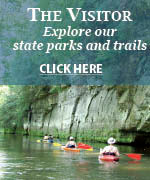By LARRY BALLWAHN | Wilton
Theodore Roosevelt was a progressive Republican. He was elected vice president in the McKinley administration, taking office in March 1901. He became president after McKinley’s assassination in September. His progressive policies were popular with much of the electorate, and he was elected to a full term in 1904. He championed William Howard Taft in the 1908 election, and Taft won, but he proved to be frustratingly conservative. Consequently, Roosevelt tried to win the 1912 Republican nomination but failed. He then founded a third party, the progressive “Bull Moose” party. This resulted in a split vote, which allowed Democrat Woodrow Wilson to win. Roosevelt was now a pariah to many of his former friends and allies.
Not used to such treatment, Roosevelt struggled to get his bearings. Shortly after the nasty defeat, Roosevelt received a letter from Argentina asking the former president to present a series of lectures there regarding his progressive agenda. Besides furthering his ideas, Roosevelt would have a chance to see his son, Kermit, who was working in South America. As the proposed trip began to take shape, a close friend, Father Zahm, suggested it be expanded to include an exploration of part of the Amazon River, or as it turned out, one of its tributaries. This idea had great appeal to the naturalist side of Roosevelt. With the sponsorship of the American Museum of Natural History, the trip was on.
Roosevelt was a courageous adventurer, having led the Rough Riders in the Spanish American War, for example. So, when the Amazon of the trip unexpectedly changed to an exploration of a nearly 1,000-mile-long unmapped River of Doubt, he agreed that he would join the expedition. Although reluctant, his son Kermit also joined, primarily out of concern for his father’s health.
The trip was a near disaster from the start. Since it was not the trip originally planned, the equipment was not adequate. The River of Doubt was so remote, it took a two-month journey to get to it. That meant that food and supplies must be packed and transported to encompass the initial travel plus the time on a river of unknown length through the Amazon Rainforest. By the time the party had actually reached the river, they had cut supplies to the bare minimum to save weight, and they were well aware that their food supply was not adequate. And still a combined American and Brazilian exploration team persevered.
Beset by insects, rapids, malaria, Roosevelt’s severe leg infection and hostile Indians, the group struggled on. The rainforest that was teeming with life gave up precious little to supplement the dwindling food supply. Consequently, near starvation was suffered without any idea of how long the river was or how long it would take to get to the end. And one crew member proved unreliable. Most of the crew members do make it to the end of the River of Doubt, but that is in doubt until the end.
To properly appreciate this nonfiction story, it is necessary to realize that it took place more than 100 years ago. Quinine was still the only drug to fight malaria; horses were still the main form of land transportation. There were several truly unexplored and untamed areas on earth and no Google Earth to look at them.
One of the Wilton Library Square Pie Book Club members, who particularly likes nonfiction adventure books, said that this was one of the best he has ever read.


